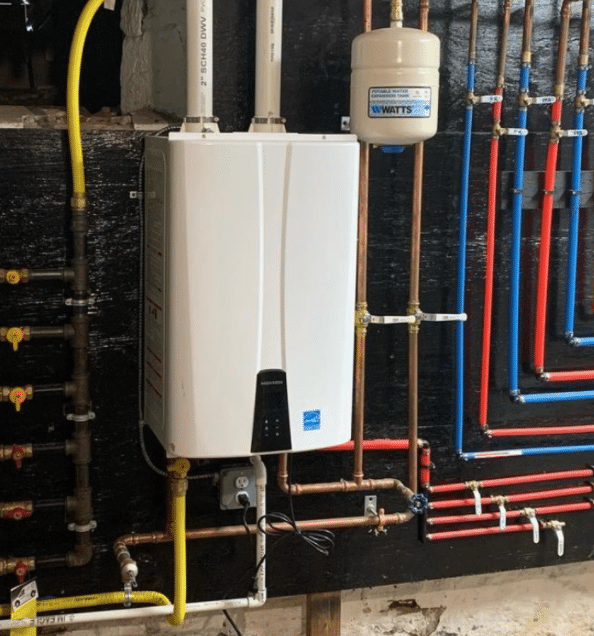
A tankless water heater flushing service might not be the first thing on your mind, but skipping this essential maintenance can lead to costly repairs. Over time, mineral buildup affects efficiency, causing the system to work harder and reducing its lifespan. So, how often should you flush your tankless water heater? It depends on your water type and usage. Let’s break it down.
Flushing Frequency Based on Water Type
The type of water running through your system plays a huge role in how often you should flush it.
Hard Water: Every 6 Months
If you live in an area with hard water, your heater is more prone to mineral buildup, especially calcium and lime deposits. These minerals can clog pipes, reduce efficiency, and even cause damage over time. To keep your unit running smoothly, flushing every six months is ideal. If you don’t have a water softener, flushing might be needed even more frequently.
Soft Water: Once a Year
Homes with soft water don’t have as many mineral deposits to worry about. If you have a water softener installed, flushing once a year is usually enough. However, regular maintenance is still essential to remove any minor buildup and ensure optimal performance.
Heavy Usage: More Frequent Flushing
Even if you have soft water, if your household uses hot water heavily—like in large families or homes with multiple bathrooms—you may need to flush your system more often. A good rule of thumb is to schedule a tankless water heater flushing service every 6-9 months if your usage is high.
Signs Your Tankless Water Heater Needs a Flush
Not sure if it’s time to flush? Your water heater will let you know. Here are some common warning signs:
- Fluctuating Water Temperature
If your hot water suddenly goes from scorching to lukewarm, mineral buildup might be interfering with the heating elements. A flush can clear out blockages and restore consistent temperature control.
- Reduced Water Pressure
A slow or weak flow from your faucets or shower could mean mineral deposits are clogging the system. If you notice a drop in pressure, it’s time for maintenance.
- Odd Noises from the Unit
Hearing strange popping or crackling sounds from your tankless water heater? That’s likely due to scale buildup inside. Flushing removes the debris and helps your unit operate quietly again.
- Increased Energy Bills
If your energy costs are creeping up without any changes in usage, an inefficient water heater could be the culprit. A clogged system has to work harder to heat water, using more energy in the process.
- Error Codes on Your Heater
Many modern tankless water heaters have a digital display that shows error codes when something’s wrong. If you see a code related to water flow or heating efficiency, check your user manual—it could be time for a flush.
Why Regular Flushing Matters
Ignoring routine flushing can lead to bigger issues, including:
- Reduced efficiency – A clogged heater won’t work as effectively, causing uneven heating and slow hot water delivery.
- Shorter lifespan – Excessive mineral buildup forces the system to work harder, leading to premature failure.
- Costly repairs – Neglecting maintenance can lead to expensive damage that could have been prevented.
Schedule a Professional Tankless Water Heater Flushing Service
While some homeowners attempt DIY flushing, a professional tankless water heater flushing service ensures it’s done correctly. Pros use the right tools and descaling solutions to remove all buildup without damaging the unit.
If you’re unsure when your last flush was—or if you’re experiencing any of the warning signs—reach plumbing service provider. Keep your water heater running efficiently and extend its lifespan with expert maintenance. Don’t wait until it’s too late—schedule your flush today!